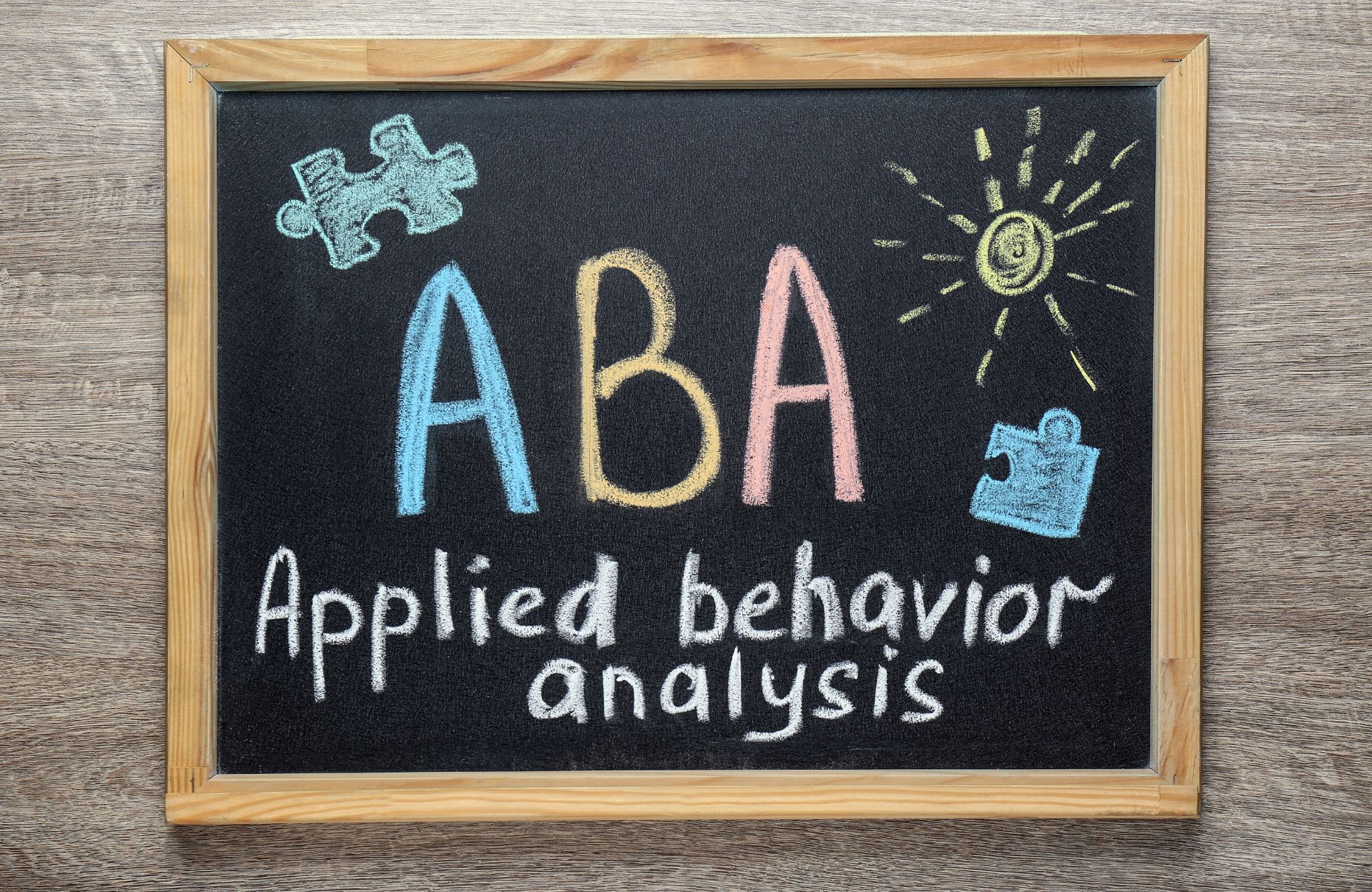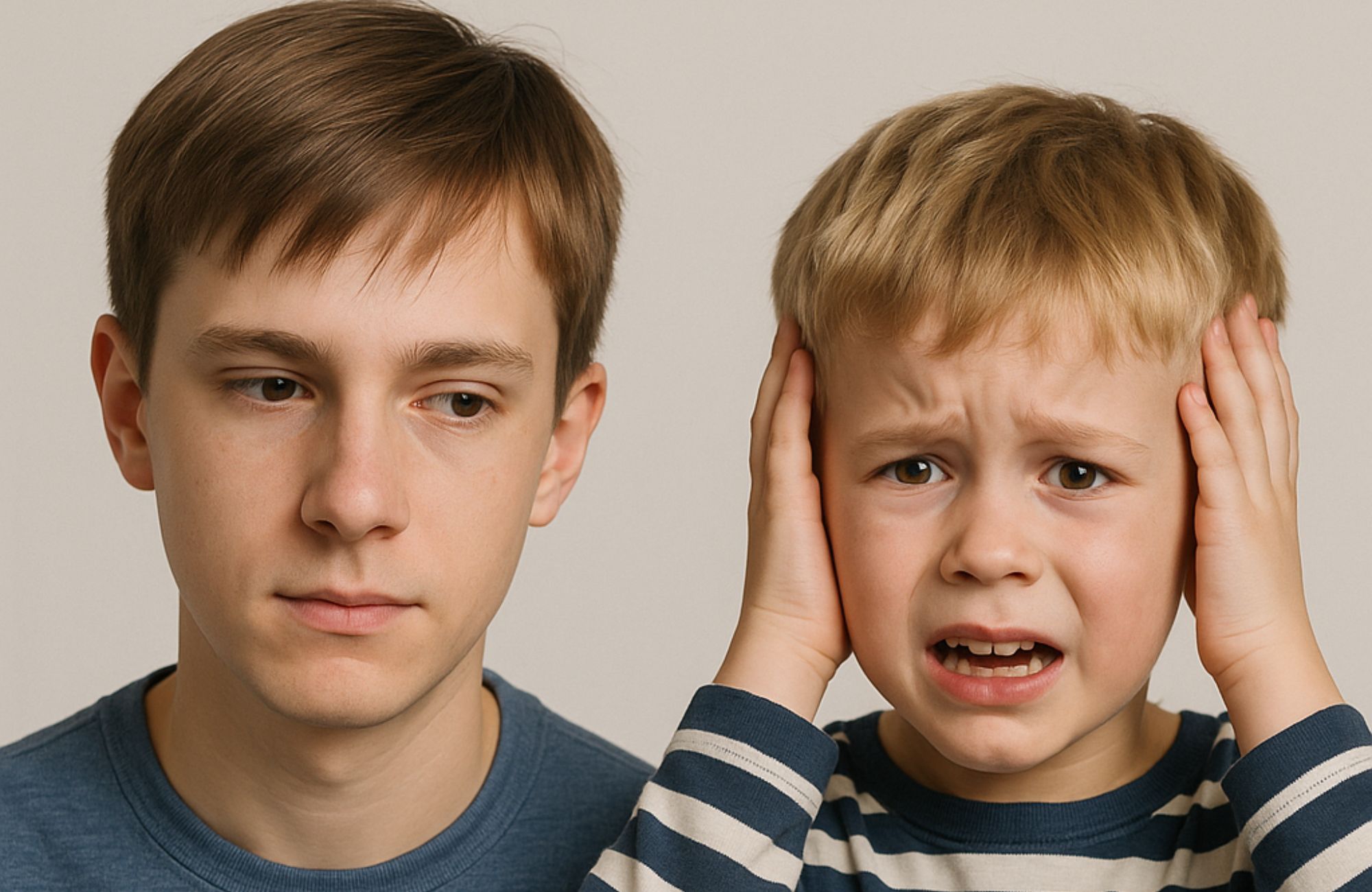How Long Does ABA Therapy Take to Work? Understanding the Timeline
How long does ABA therapy take to work? Many parents and caregivers ask this question when starting Applied Behavior Analysis (ABA) therapy for their child. The timeline can vary, but early improvements are often seen within 3-6 months, with significant progress usually noticeable between 6-12 months. This article explores the factors that can influence how quickly ABA therapy works, helping you set realistic expectations and make informed decisions.
Key Takeaways
- The effectiveness and timeline of ABA therapy are influenced by individual characteristics, therapy intensity, and the quality of the program.
- Most children begin to see benefits from ABA therapy within 6 months to a year, with significant progress often observed in the 6 to 12-month timeframe.
- Active parental involvement and consistency across different settings enhance the effectiveness of ABA therapy and support meaningful progress.
Factors Affecting ABA Therapy Results

The duration and effectiveness of ABA therapy can vary significantly based on several key factors. Knowing these factors helps set realistic expectations and tailor the therapy to the child’s unique needs. The primary elements influencing ABA therapy results include individual characteristics, therapy intensity, and the quality of ABA programs.
A child’s age, cognitive abilities, and the severity of their challenges play crucial roles in how long ABA therapy might take and how quickly results can be observed. Younger children often show quicker results compared to older children or adults, and those with milder forms of autism may progress faster in certain areas like social skills and independence. ABA therapy is highly individualized, with each child’s unique abilities and challenges dictating the focus and strategies of the interventions.
The intensity of the therapy is measured in hours per week. This factor is critical for its effectiveness. Research shows that more intensive therapy leads to improved outcomes. This type of therapy usually involves 20-40 hours of sessions each week.
The quality of the ABA program, including evidence-based techniques and regular evaluations by qualified professionals, also significantly impacts therapy effectiveness. Considering these factors helps families understand the expected timeline and potential for meaningful progress.
Individual Characteristics
Age is pivotal in shaping the ABA therapy journey, with younger children generally showing quicker results. Therapy sessions are tailored to different age groups, ensuring interventions are age-appropriate and effective. Cognitive abilities influence how children process and respond to therapy, shaping the focus of interventions to improve life skills, social behaviors, and overall adaptive behaviors.
The severity of autism also impacts the therapy’s focus and duration. A child with autism spectrum disorder (ASD) who has severe autism requires strategies for improving communication and life skills, while those with milder forms may focus more on social skills and independence.
Each child’s unique characteristics necessitate a highly individualized approach, ensuring interventions are tailored to their specific needs and abilities. This individualized approach helps in fostering positive behaviors and addressing more complex behaviors effectively.
Therapy Intensity
The intensity of ABA therapy, often quantified by hours per week, significantly influences the speed and success of outcomes. Intensive therapy, typically ranging from 20 to 40 hours per week, yields better results in improving adaptive behaviors and reducing problem behaviors. The more frequent and consistent the therapy sessions, the more opportunities there are for children to practice and reinforce new skills. Additionally, many parents wonder how long does aba therapy need to be for optimal results.
Starting ABA therapy with high intensity can lead to significant progress in a shorter time. However, balancing intensive therapy with time for rest, play, and family activities prevents burnout and ensures overall well-being during aba therapy sessions.
Consistent therapy across different settings, such as home and school, further enhances the effectiveness of the interventions.
Quality of ABA Therapy Programs
The quality of ABA therapy programs is a crucial determinant of effective outcomes. High-quality programs are highly individualized and based on comprehensive assessments conducted by qualified professionals. These programs utilize evidence-based techniques, which have been proven to significantly improve the outcomes of ABA therapy. Regular evaluations allow for timely modifications to interventions, keeping the therapy aligned with the child’s evolving needs and goals.
Effective ABA therapy programs also involve the active participation of family members, providing them with the tools and strategies to support their child’s progress at home. Ensuring consistent, high-quality therapy maximizes the potential benefits of ABA therapy, helping children achieve meaningful progress.
The involvement of a board-certified behavior analyst (BCBA) is essential in maintaining the quality and effectiveness of the therapy.
Typical Progress Timeline in ABA Therapy

Understanding the typical progress timeline in ABA therapy helps set realistic expectations for families and caregivers. While each child’s journey is unique, general timelines provide guidance on expected milestones and therapy duration. Most children start seeing benefits from ABA therapy within 6 months to a year, with significant progress often observed between 6 to 12 months. The overall success rate of ABA therapy in treating children with ASD is reported to be over 89%, highlighting its effectiveness. The aba therapy timeline shows that significant progress can be achieved within this period.
The therapy process is gradual, and children typically participate in ABA therapy for several months to years, depending on their individual needs and goals. The initial stages of therapy focus on building foundational skills, while later stages address more complex behaviors and independence.
This section will outline the typical progress timeline, including early changes, significant progress, and long-term improvements.
Early Changes: First 3 to 6 Months
In the first 3-6 months of ABA therapy, parents often see early progress in their child’s behavior and skills. Initial improvements often include better compliance with instructions, reduction in problematic behaviors, and development of early communication skills. During this period, ABA therapy focuses on building communication foundations, establishing routines, and introducing basic behavioral interventions.
In the early months, one of the main goals is to reduce problem behaviors. Another important objective is to teach basic communication skills. Progress is typically assessed through standardized assessments and regular reviews, providing measurable benchmarks for the child’s progress. Parents may observe their child better following routines and managing emotions, indicating early intervention progress in the therapy.
Significant Progress: 6 to 12 Months
Between 6-12 months, children often show significant progress in language development, social interactions, and daily living skills. The extent of progress can vary based on the consistency of therapy and the child’s response to interventions. Therapy sessions may start focusing on more complex skills. These include play skills, peer interactions, and academic readiness.
This period is crucial for consolidating early gains and building on them for substantial improvements. Parents and caregivers should support progress by reinforcing skills learned during therapy and maintaining consistent routines.
Regular communication with the therapy team is crucial for tracking progress and making necessary adjustments to the therapy plan.
Long Term Improvements: Beyond 1 Year
Beyond one year, substantial improvements in communication skills, social behaviors, and independence in daily activities are often observed. Sustained commitment to therapy over several years is necessary for significant, long-term improvements. Examples of more complex goals in ABA therapy include developing advanced social skills and achieving greater independence.
The typical span for evaluating long-term success in ABA therapy is 1 to 3 years, during which therapy continues to evolve based on progress. Families should closely collaborate with the therapy team to ensure interventions remain effective and aligned with the child’s needs. Focusing on long-term goals helps children achieve better outcomes and greater independence.
Strategies to Maximize ABA Therapy Effectiveness

Maximizing ABA therapy effectiveness involves key strategies. Consistency and frequency of sessions are crucial for accelerating progress. Balancing intensive therapy with time for rest, play, and family activities ensures overall well-being. Factors contributing to the effectiveness of an ABA program include the quality of therapy, individualization, experience of professionals, evidence-based techniques, and data collection.
Setting realistic and measurable goals helps families understand the expected timeline for each objective and track progress effectively. Active parental involvement and consistent application of strategies across settings further enhance ABA therapy effectiveness.
This section will provide detailed strategies to maximize the benefits of ABA therapy, including choosing the right provider, parental involvement, and maintaining consistency across settings.
Choosing the Right ABA Provider
Selecting the right ABA provider is crucial for therapy effectiveness. Families should seek providers who tailor therapy to the child’s needs and involve the family in the process. Ensure the provider offers individualized programs rather than a one-size-fits-all approach.
Verifying that the staff includes a Board Certified Behavior Analyst (BCBA) guarantees quality service. Engaging with other professionals involved in the therapy can enhance collaboration and lead to better outcomes. Choosing a qualified and experienced ABA provider ensures the child receives the best possible care and support.
Parental Involvement
Parental involvement is critical to ABA therapy success. Active participation enhances therapy effectiveness and ensures steady progress. Parents support progress by participating in therapy sessions and practicing skills at home.
Consistency and frequent communication with the therapy team are crucial for tracking and supporting progress. Actively engaging in the therapy process allows parents to reinforce positive behaviors and help their child achieve therapy goals. This collaborative approach fosters better outcomes and ensures comprehensive support.
Consistency Across Settings
Applying applied behavior analysis strategies consistently across settings, such as home and school, is crucial for effective therapy. Reinforcing skills in various environments helps children achieve faster improvements and better adapt to routines.
Families often notice significant adaptation to routines and reduced distress during transitions with consistent application of ABA strategies. Maintaining consistent therapy across settings helps ensure that the skills learned during therapy are retained and generalized to different aspects of the child’s life.
This approach promotes overall development and enhances the effectiveness of ABA therapy.
Monitoring and Adjusting the Therapy Plan

Regular monitoring and adjusting of the therapy plan ensure it continues to meet the child’s evolving needs. Regular progress reviews allow therapists to make precise modifications to treatment plans based on progress. This process involves ongoing assessments, data collection, and frequent communication between parents and therapists to align therapy goals.
Parents should actively engage with the therapy team to discuss progress and necessary adjustments to the plan. Staying involved and informed helps ensure the therapy remains effective and aligned with the child’s developmental needs. This collaborative approach helps in reinforcing positive behaviors and addressing any emerging challenges promptly.
Regular Progress Reviews
Regular progress reviews ensure the therapy plan continues to meet evolving needs. Therapists use various data collection methods, including tracking skill acquisition and behavior reduction, to assess progress. Ongoing assessments during the first few months of ABA therapy help fine-tune the plan.
Therapists often use an ABA therapy milestone chart to evaluate development and ensure meaningful strides towards goals. Regular communication with the therapy team is recommended for effectively tracking progress and making necessary adjustments.
Adapting to the Child’s Needs
A good ABA provider should flexibly adapt their approach to meet each child’s unique needs. Flexibility in approaches allows for modifications catering to a child’s specific strengths and challenges, enhancing outcomes. Progress reviews ensure therapy remains aligned with the child’s changing needs and goals.
Ongoing progress focuses on refining skills and expanding independence after one year of therapy. Tailoring interventions to each child’s evolving challenges and strengths provides more effective support and fosters better outcomes. This adaptive approach ensures therapy remains relevant and beneficial to the child’s development.
When to Consider Stopping ABA Therapy

Deciding when to stop ABA therapy is a significant decision best made in consultation with professionals. Consulting with board-certified behavior analysts (BCBAs) and other trained professionals helps determine if a child is ready to stop ABA therapy. Evaluating the child’s progress and goals with professional input is crucial in deciding whether to continue or stop therapy.
A collaborative effort involving the child, family, and BCBA is essential for preparing for long-term success after therapy. Ensure all targeted objectives are achieved and the child can function effectively without support before concluding ABA therapy. This careful evaluation helps in making informed decisions about the continuation of therapy.
Consulting with Professionals
The duration of ABA therapy is guided by the child’s progress and needs. Parents should inquire about progress, difficulties, strengths, and ongoing needs when consulting with professionals. Consulting with board-certified behavior analysts and other professionals is essential for informed decisions about ABA therapy duration.
Professional guidance ensures the therapy plan aligns with the child’s unique challenges and necessary adjustments over time. Engaging in discussions with BCBAs provides insights into whether a child is ready to transition away from ABA therapy and what additional support might be needed.
Affinity ABC Offers Expert In Home ABA Therapy Services in New Mexico
Affinity ABC provides tailored in-home ABA therapy services that integrate learning into the child’s everyday environment. The organization focuses on building supportive relationships among clients, families, and therapists, ensuring therapy is both effective and compassionate. Affinity ABC offers specialized ABA therapy services in children’s homes across New Mexico, making therapy more accessible and convenient for families.
The team at Affinity ABC includes board-certified behavior analysts committed to providing high-quality, individualized ABA therapy programs. By working closely with families, Affinity ABC helps children achieve significant progress and develop essential skills for greater independence. Their approach emphasizes regular evaluations and collaborative goal-setting to ensure that therapy remains aligned with the child’s evolving needs and goals.
Evaluating Goals and Progress
Evaluating goals and progress is a critical aspect of ABA therapy at Affinity ABC. It is important to ensure that the child has developed all necessary skills to thrive before ending ABA therapy. Thorough initial assessment and confirmation of skill acquisition are essential for making informed decisions about the continuation of ABA therapy.
Regular evaluations of progress help determine when to adjust or conclude ABA therapy. Setting clear, measurable objectives is crucial for tracking the effectiveness of ABA therapy over time. By involving both parents and therapists in collaborative goal-setting, Affinity ABC ensures that the therapy goals meet the child’s needs and support their development.
Summary: How Long Does ABA Therapy Take To Work?
In summary, understanding the timeline of ABA therapy and the factors that influence its effectiveness can help families set realistic expectations and support their child’s progress. From individual characteristics and therapy intensity to the quality of ABA programs, several key factors play a role in determining how long ABA therapy takes to work. Regular monitoring, adapting to the child’s needs, and maximizing therapy effectiveness through consistent application and parental involvement are crucial for achieving meaningful progress. Affinity ABC’s tailored, in-home ABA therapy services offer a supportive and effective approach to helping children with autism achieve their full potential.
Frequently Asked Questions: How Long Does ABA Therapy Take To Work?
How do I know if ABA therapy is working?
ABA therapy is working if you observe improvements in communication skills, increased social interactions, a reduction in problematic behaviors, and positive feedback from caregivers. Regular monitoring of these indicators will help assess the therapy’s effectiveness.
What is the success rate of ABA therapy?
The success rate of ABA therapy for Autism Spectrum Disorder can be as high as 89%, depending on factors like treatment intensity, duration, and individual characteristics. This underscores the potential effectiveness of ABA therapy for many children with autism.
How long does it typically take to see progress in ABA therapy?
Typically, you can expect to see progress in ABA therapy within 6 to 12 months, with many children experiencing noticeable benefits during this timeframe. Consistent engagement and tailored interventions play a key role in achieving these results.
What factors affect the duration and effectiveness of ABA therapy?
The duration and effectiveness of ABA therapy are significantly affected by individual characteristics, the intensity of the therapy, and the quality of the programs provided. Ensuring these factors are optimized can enhance therapeutic outcomes.
How many hours of ABA therapy are recommended per week?
It is recommended to have 20-40 hours of ABA therapy per week for better outcomes. This level of intensity can significantly enhance the benefits of the therapy.














Comments
adamgordon
Thanks for this great post!
miaqueen
Thanks for sharing 🙂
cmsmasters
Always happy to be of service.